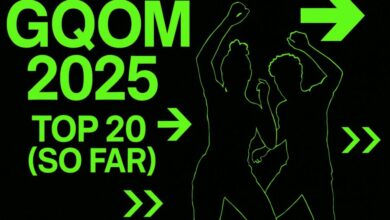
Gqom (pronounced “gom”) is one of the most distinctive and powerful electronic sounds to come out of South Africa, and in 2025 it continues to reverberate across dancefloors worldwide. Originating in the townships of Durban around the early 2010s, gqom is characterized by its raw, hypnotic, and minimal beats. Unlike house or amapiano, which often build around lush chords and log drums, gqom is stripped-down and percussive. The sound pulses with broken beats, dark basslines, looped samples, and a haunting, almost industrial edge. This uncompromising approach is what made gqom stand out when it first hit the global scene — and it still drives its underground appeal today.
Origins in Durban Townships
Gqom’s roots lie in South Africa’s youth culture, particularly among producers and DJs experimenting with FruityLoops (FL Studio) on home computers in Durban’s townships. Young creators stitched together drum-heavy loops and vocal snippets, giving birth to a genre that sounded both futuristic and deeply local. Gqom quickly became the soundtrack of taxis, clubs, and street parties, embodying the restless energy of Durban’s nightlife. By the mid-2010s, producers like DJ Lag, Babes Wodumo, Distruction Boyz, and Mampintsha had become ambassadors of the style, propelling it into national consciousness with hits like “Wololo.”
The Global Breakthrough
By 2017, gqom’s seismic basslines had reached international ears. European DJs and festival-goers embraced it, with artists like DJ Lag touring globally and gqom tracks appearing in mixes by Diplo and other EDM heavyweights. The genre’s intensity made it a natural fit for warehouse raves and underground clubs in London, Berlin, and New York. This crossover introduced gqom as part of the broader African electronic wave that also includes amapiano and Afro-house. Yet while amapiano has taken a smoother, more melodic route into mainstream pop, gqom has maintained its gritty underground identity — its darkness is part of its allure.
Sound and Aesthetic
The typical gqom track revolves around pounding kicks, syncopated snares, and eerie sound effects that feel cinematic. Vocals, when present, are often repetitive chants, calls to dance, or sampled shouts — functioning less as lyrical storytelling and more as rhythmic instruments. Gqom’s aesthetic has also been tied closely to dance culture. Styles like the gwara gwara (a viral dance move that Rihanna performed at the 2018 Grammys) and countless street-dance battles have made gqom inseparable from physical movement. Its visual culture reflects Durban’s energy: smoky dance floors, flashing lights, and communities moving in sync to relentless beats.
Gqom in 2025
In 2025, gqom remains a proud export of South African creativity. While amapiano dominates charts and streaming platforms, gqom thrives in clubs, underground festivals, and experimental spaces. Artists like DJ Lag continue to innovate, blending gqom with techno and bass music in collaborations with global acts. Younger producers are pushing hybrid sounds — sometimes infusing gqom with amapiano’s log drums or Afro-tech’s melodic overlays. Meanwhile, international DJs still use gqom tracks to inject intensity into sets, especially in Europe’s electronic circuits. The genre’s ability to create a trance-like communal energy ensures it has a secure space in the global dance ecosystem.
Videos and Media
Watch DJ Lag’s powerful Boiler Room set to experience gqom in its rawest form:
Babes Wodumo’s breakthrough hit “Wololo,” which brought gqom to national prominence:
Why Gqom Matters
Gqom is more than just a genre — it’s a cultural statement of South Africa’s post-apartheid youth. Its stripped-back minimalism contrasts with global pop polish, making it feel authentic and raw. It gives voice to township creativity, shows how limited resources can spark global innovation, and continues to remind the world of South Africa’s ability to reinvent the sound of the dancefloor. In 2025, gqom is not competing with amapiano; it is complementing it — offering a darker, more hypnotic side of the same vibrant South African music revolution.



